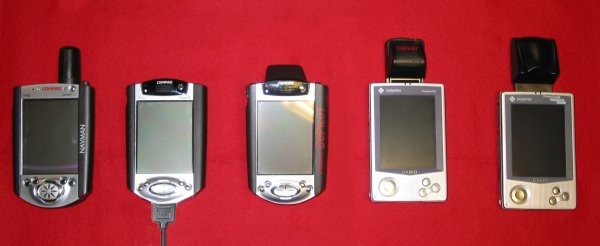|

We get a lot of requests in the
forums, via email and also people we talk to asking us What is
the best GPS Receiver around ?. The best way to measure
this is in the TTFF (Time To First Fix) and re-acquisition times.
When the satellites try to acquire a
lock they need to rely on both Almanac and Ephemeris data.
Almanac data is course orbital parameters for all satellites in the
GPS constellation which isn't very accurate information but is
usually current for up to several months. Then there's
Ephemeris data which is very precise orbital and clock correction
for each satellite and is required for precise positioning, eg 3D
fix. Each satellite broadcasts only it's Ephemeris data which
has a life span of approx 5 hours per satellite. Each
satellite will broadcast the Ephemeris data for a 30 second period,
and then re-transmit, so if the GPS receiver loses track of the data
part way through the 30 second cycle, you will have to start again
at the next 30 second cycle.
There are 4 TTFF start
types depending on the amount of Almanac and Ephemeris data that is
present in the GPS Receiver and where it thinks it is and the
satellites are which can help aid the GPS acquire a
lock quicker. These are designated as Factory, Cold, Warm and Hot.
Factory is where the receiver has no
knowledge whatsoever of Almanac data in turn to locate the
satellites and retrieve Ephemeris data, and for a full Almanac to be
downloaded can take approx 12.5 mins, hence most companies suggest a
factory start of 15 minutes.
Cold start is usually the slowest TTFF
you'll witness on a regular basis which has some knowledge of Almanac
data but no Ephemeris data. Almanac data is not precise, but
current for several months. When a cold start is required, the
receiver has to download a full set of Ephemeris data which as
already mentioned above is broadcast over a 30 second cycle and
re-transmitted every 30 seconds.
When starting the receiver in a Warm
or Hot mode usually you'll find that the receiver has some Ephemeris
data in the case of a Warm start, and in the case of a Hot start it
has nearly a full set of Ephemeris data, which aids in making
quicker TTFF's.
One thing to bear in mind is that
although Manufacturers quote their average Cold, Warm and Hot TTFF's,
these will vary. Depending on where you are can dramatically
change the quickness of acquiring a satellite lock. To load
the Ephemeris data form the satellites, the GPS Receiver requires a
full 30 seconds of data reception. If this is interrupted from
a tall building, or a branch from a tree, or if the signal you are
receiving is being reflected off of a building then all of this can
cause a problem in the data reception. If the data isn't
received in full, the Ephemeris data collection has to start again
at the next cycle.
When you see longer times in our table
tests below, this
is where the GPS receiver hasn't been able to receive the full
amount of data in the quickest time possible. The only other equation
is how good the GPS Receiver antenna is, or in the terms of Compact
Flash GPS Receivers and iPAQ sleeves, is whether there is any
interference caused from the Pocket PC Processor.
Each acquisition made below in the
table was from a 3D fix, which is a satellite lock that not only
allows you to tell where you are longitude and latitude on the blue
marble (planet earth), but also the altitude. A 2D fix
typically will not have any altitude information so theoretically
cannot exactly position you in a 3D environment.
The quicker the TTFF, the better,
because it means you can commence your journey quicker. If you
have a slow TTFF, then you could be waiting anything from 5 minutes+. If you commence driving
before receiving all the Almanac and Ephemeris data then you will
severely increase your problems in acquiring fixes. You can
then sometimes find this increasing your TTFF time to anything up to 50 minutes due to the movement of the GPS receiver
and being blocked or having signals reflected.
The Pocket GPS team have received well
over 50 TTFF's at around 15-20 minute mark in the last 3 months, and
over a dozen at around 30-50 minutes both using the Navman sleeve.
As people put so much faith in TTFF's
to choose which GPS Receiver to purchase, we felt it only right to
produce a list of TTFF's recorded and to also show the quickest and
slowest times we've achieved in each test which hopefully allow you
to make a better selection on which GPS Receiver to purchase next.
The tests we performed were mainly to
check the GPS receiver in a cold state, but have included an average
warm and hot test and have compared all of these with the
manufacturer quoted time (which again is only an approximate that
they have experienced in their tests). As time goes on and the
Pocket GPS Team test more GPS receivers, more TTFF's will be added
to this table.
|